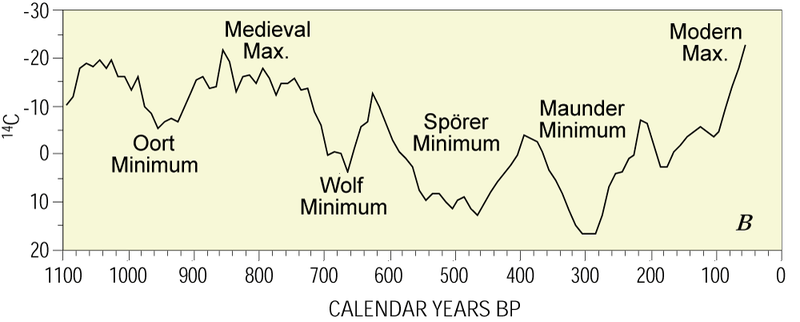Posted on 03/23/2010 10:34:30 AM PDT by Comedylover
A group of environmental scientists and the United Nations has discovered the sun is causing much of the global warming we experience today. “We’ve suspected this for some time,” said IPCC regular contributor Gordy Columbo. “But there was no way to prove it. Now we can.”
The scientists checked the temperature of the atmosphere in the daylight, when the sun was shining, and at night, when the sun was not. Amazingly, they found the daylight temperatures to be much warmer.
(Excerpt) Read more at charliechatter.com ...
Damn...what they gonna do about SUVs now? Maybe we need a “sunshine” tax.......
Maybe the demon rats will pass a law banning sunshine. The a--holes.
You had me fooled. I hoped that some environmentalists had come to their senses.
PHDs... Piled Higher and Deeper. Common sense has flown out the window.
“...environmental scientists and the United Nations has discovered the sun is causing much of the global warming we experience today. “We’ve suspected this for some time,”
Well, gollllllllllly! I’m SURE glad we have such BRIGHT and BRILLIANT people in charge of things.
We yokels woulda NEVER thunk the sun had anything ta do wit it!
Boycott the sun!
LOL. Too good to be true!
Damn that really took some real analysis. Wow I never would have thought of it. You mean the output of energy from the Sun isn’t constant? I never would have considered that.

They call this science? Har Har Har
She’s cute AND smart. ;-)
But, but, but what about man made emissions of CO 2?
Wow! You mean that big fire-ball in the sky has something to do with how warm the Earth is??? Who would have thought that? Oh, yeah, me.
It’s satire. Is there a satire buttom I missed somewhere when I posted?
Here's a chart showing the various peaks and dips in the 11-year sunspot cycle throughout the past centuries. Note the "Medieval Max". It corresponds to the "Medieval Warm Period". The "Maunder Minimum" corresponds to the "Little Ice Age", and the "Modern Max" to the recent warming trend we had been experiencing, at least until the past 15 years or so.

"Changes in carbon-14 concentration in the Earth's atmosphere, which serves as a long term proxy of solar activity. Note the present day is on the left-hand side of this figure."
So dirt-brains like algore are actually wishing for AN ICE AGE ? GOOD GOD ! ! ! !
Although sunspot cycle 24 is VERY slow to get underway (decades-long records are being broken for low minimum period activity), over the course of the past 80-100 years sunspot numbers have actually been through the roof (during *peak periods* of the 11-year solar activity cycle throughout this 80-100 yr period). Cycle-24 is not expected to get really busy for a few more years yet, possibly not until around 2013 they're saying now. Will the high level of sunspot activity continue when the peak finally arrives?. We will see. -etl
If you look at the chart below, you will see that sunspot activity (during solar maxes--the individual peaks every apprx 11 yrs) has been relatively high since about 1940 and almost non-existent for the period between about 1625 and 1725. This period is known as the Maunder (sunspot) Minimum or "Little Ice Age".-etl

____________________________________________________
From BBC News [yr: 2004]:
"A new [2004] analysis shows that the Sun is more active now than it has been at anytime in the previous 1,000 years. Scientists based at the Institute for Astronomy in Zurich used ice cores from Greenland to construct a picture of our star's activity in the past. They say that over the last century the number of sunspots rose at the same time that the Earth's climate became steadily warmer."..."In particular, it has been noted that between about 1645 and 1715, few sunspots were seen on the Sun's surface.
This period is called the Maunder Minimum after the English astronomer who studied it. It coincided with a spell of prolonged cold weather often referred to as the "Little Ice Age". Solar scientists strongly suspect there is a link between the two events - but the exact mechanism remains elusive."
http://news.bbc.co.uk/1/hi/sci/tech/3869753.stm
____________________________________________________
It's really hard to imagine how this little ball of fire could have any impact on our climate at all. /s
But the main arguments being made for a solar-climate connection is not so much to do with the heat of the Sun (the sun isn't necessarily getting warmer, although that may be happening as well) but rather with its magnetic cycles. When the Sun is more magnetically active (typically around the peak of the 11-year sunspot cycle --we are a few yrs away at the moment), the Sun's magnetic field is better able to deflect away incoming galactic cosmic rays (highly energetic charged particles coming from outside the solar system). The GCRs are thought to help in the formation of low-level cumulus clouds -the type of clouds that BLOCK sunlight and help cool the Earth. So when the Sun's MF is acting up (not like now -the next sunspot max is expected in about 2013, according to the latest predictions), less GCRs reach the Earth's atmosphere, less low level, sunlight-blocking clouds form, and more sunlight gets through to warm the Earth's surface...naturally. Clouds are basically made up of tiny water droplets. When minute particles in the atmosphere become ionized by incoming GCRs they become very 'attractive' to water molecules, in a purely chemical sense of the word. The process by which the Sun's increased magnetic field deflects incoming cosmic rays is very similar to the way magnetic fields steer electrons in a cathode ray tube (old-time television tube) or electrons and other charged particles around the ring of a subatomic particle accelerator.-etl
____________________________________________________
From NASA's Solar and Heliospheric Observatory's "Not So Frequently Asked Questions" section:
Q-Does the number of sunspots have any effect on the climate here on Earth?
A-Sunspots are slightly cooler areas on the surface of the Sun, due to the intense magnetic fields, so they radiate a little less energy than the surroundings. However, there are usually nearby areas associated with the sunspots that are a little hotter (called falculae), and they more than compensate. The result is that there is a little bit more radiation coming from the Sun when it has more sunspots, but the effect is so small that it has very little impact on the weather and climate on Earth.
However, there are more important indirect effects: sunspots are associated with what we call "active regions", with large magnetic structures containing very hot material (being held in place by the magnetism). This causes more ultraviolet (or UV) radiation (the rays that give you a suntan or sunburn), and extreme ultraviolet radiation (EUV). These types of radiation have an impact on the chemistry of the upper atmosphere (e.g. producing ozone). Since some of these products act as greenhouse gases, the number of sunspots (through association with active regions) may influence the climate in this way.
Many active regions produce giant outflows of material that are called Coronal Mass Ejections. These ejections drag with them some of the more intense magnetic fields that are found in the active regions. The magnetic fields act as a shield for high-energy particles coming from various sources in our galaxy (outside the solar system). These "cosmic rays" (CRs) cause ionization of molecules in the atmosphere, and thereby can cause clouds to form (because the ionized molecules or dust particle can act as "seeds" for drop formation).
If clouds are formed very high in the atmosphere, the net result is a heating of the Earth - it acts as a "blanket" that keeps warmth in.
If clouds are formed lower down in the atmosphere, they reflect sunlight better than they keep heat inside, so the net result is cooling.
Which processes are dominant is still a matter of research.
http://sohowww.nascom.nasa.gov/classroom/notsofaq.html#SUNSPOT_CLIMATE
Disclaimer: Opinions posted on Free Republic are those of the individual posters and do not necessarily represent the opinion of Free Republic or its management. All materials posted herein are protected by copyright law and the exemption for fair use of copyrighted works.